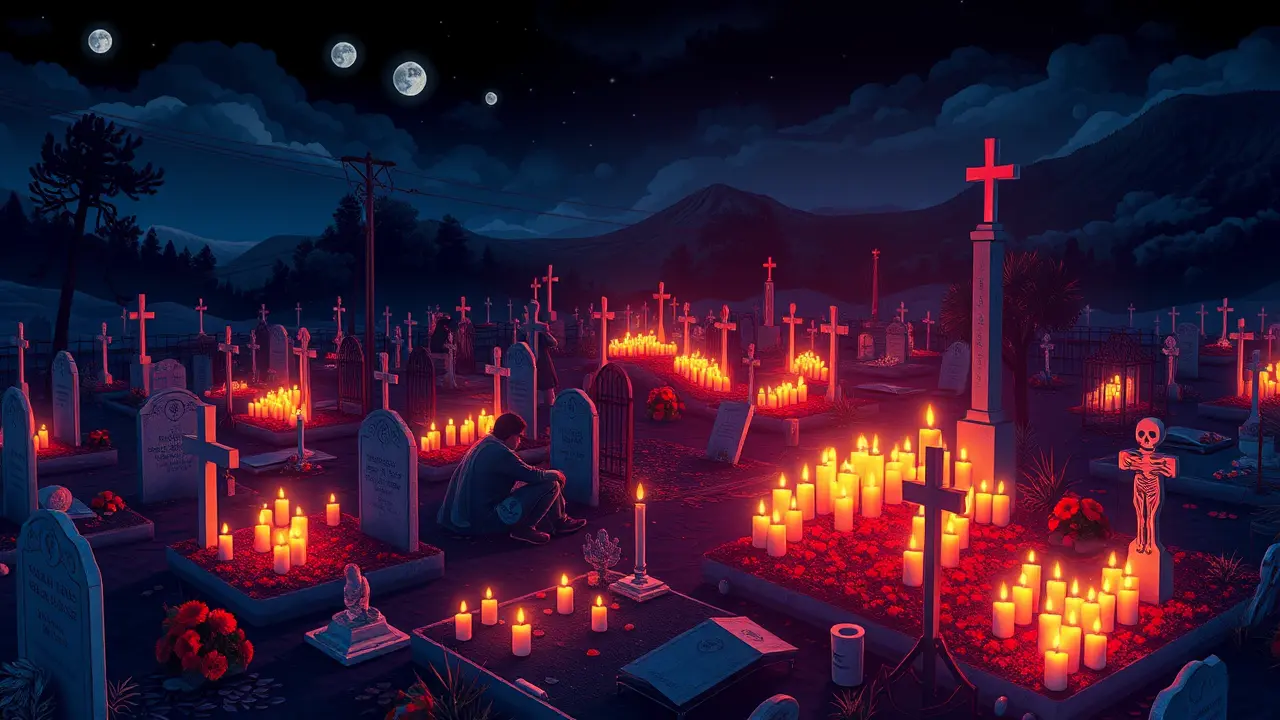
SciencearchaeologyCultural Heritage
Mexican Town Celebrates Day of the Dead in Candlelit Cemeteries.
LA
Laura Bennett
11 hours ago7 min read
In the small, highland town of Arocutin, nestled in the western Mexican state of Michoacán, the veil between worlds grows thin as night falls, and the living prepare to welcome the dead. This isn't a somber affair of mourning, but a vibrant, candlelit vigil that transforms the local cemetery into a bustling, fragrant city of souls.Families, from the eldest abuela to the smallest child, spend the entire night seated on petates, woven reed mats, beside the meticulously cleaned and decorated graves of their loved ones. The air, thick with the scent of copal incense, carries a profound sense of anticipation, not fear.They are not visiting the dead; the dead are visiting them. This is Día de los Muertos, a tradition so deeply woven into the Mexican psyche that it is less a holiday and more a fundamental expression of cultural identity, a beautiful, complex tapestry where pre-Hispanic Indigenous beliefs and Spanish Catholicism are not in conflict but in a centuries-long, harmonious dance.The ofrendas, or altars, built in homes and at gravesites, are not mere decoration but sacred portals, laden with symbolic offerings: bright orange cempasúchil, or marigolds, whose potent fragrance and vibrant color are believed to guide the spirits home; pan de muerto, a sweet, anise-seeded bread shaped with bone-like crosspieces; salt for purification; water to quench the thirst of the long journey; and the favorite foods, drinks, and cigarettes of the departed. In Arocutin, as in countless pueblos across Mexico, you see this syncretism in its purest form.The Catholic crosses on the graves stand alongside figures of Mictecacihuatl, the Aztec 'Lady of the Dead,' who has evolved into the more familiar La Catrina. The all-night vigil itself echoes both the pre-Columbian belief in a cyclical view of life and death and the Christian practice of prayerful watch.It’s a night for storytelling, for sharing anecdotes that make everyone laugh, for pouring a shot of tequila for a grandfather who loved his drink, ensuring his memory remains as alive and present as the flickering candle flames that illuminate the faces of the living. This tradition, recognized by UNESCO as an Intangible Cultural Heritage of Humanity, is a powerful act of collective memory, a defiant celebration in the face of mortality that teaches a profound lesson: that true death is not the end of life, but being forgotten. In the soft glow of a thousand candles, amidst the marigold petals and the quiet murmurs of conversation with those who have passed, the people of Arocutin demonstrate that the bonds of love and family are, indeed, eternal.
#featured
#Day of the Dead
#Mexico
#tradition
#Arocutin
#cemeteries
#cultural celebration
#indigenous beliefs
Stay Informed. Act Smarter.
Get weekly highlights, major headlines, and expert insights — then put your knowledge to work in our live prediction markets.
© 2025 Outpoll Service LTD. All rights reserved.